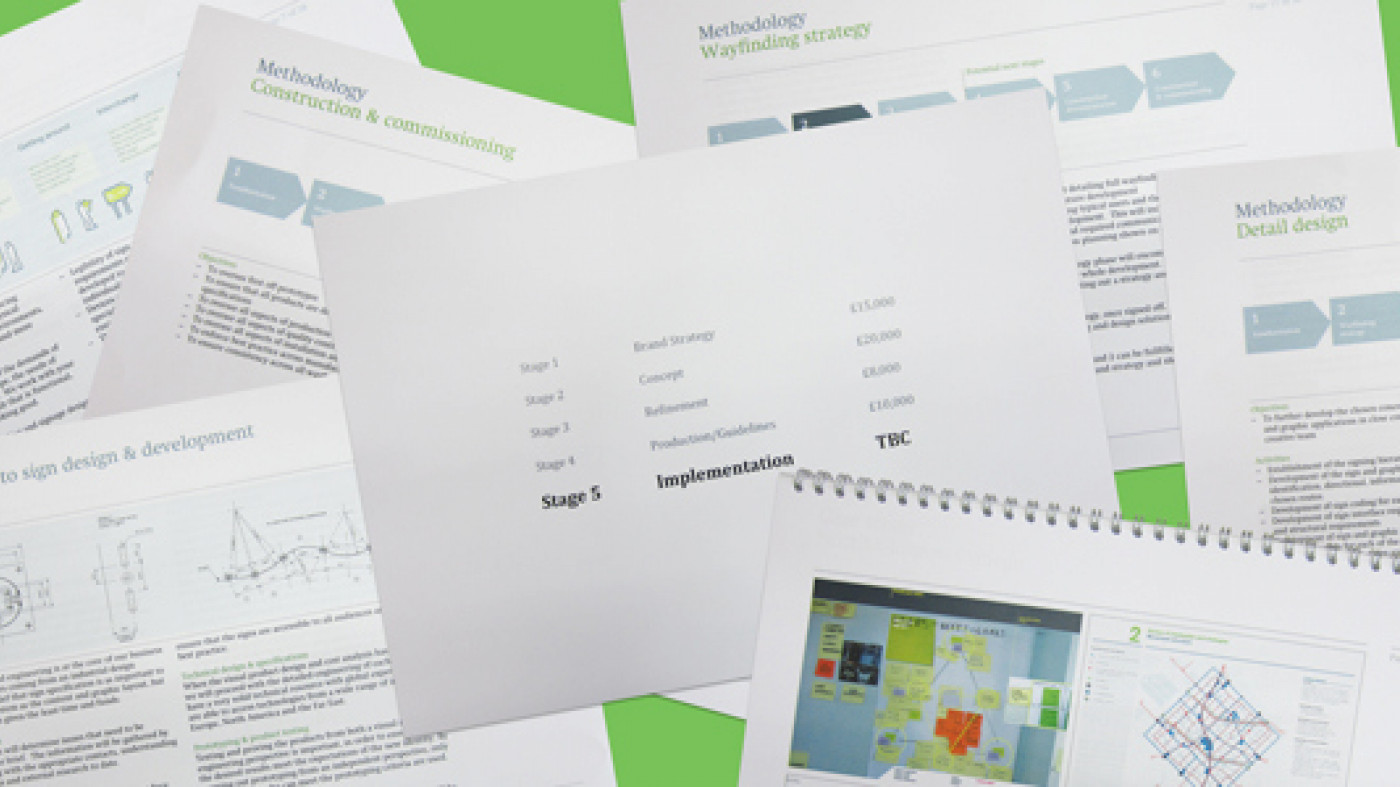What's wrong with that you may well ask? Well, here's the thing. Ask the creative the question of how the logo came to be applied to the truck and he or she will probably reply something along the lines of I think it was the client in-house team. We just took the brand to guidelines with some indicative applications.
So to get this completely straight: The Creative Director and their team at ABC Brand Consultants created or designed the brand logo but they didn't go any further than that. You see, the point I'm making is this: Within the total brand development process, the design (while unquestionably vital) is but one element, and it is only in physical execution, in terms of the bits people see, feel and touch that a brand interacts and influences its target audience. Or to be more precise, good design is only good through the impact it creates in the market.
You see, so much of what is referred to as branding is concentrated within the front end creation, the thinking and design of the brand yet the application and physical realisation in terms of touchpoints and assets across the customer journey is too often ill-defined and quite literally left to chance.
During 16 years of working in highly regarded branding and design agencies, I can honestly say most branding programmes and their process went something like this:
Strategy, Concept, Refinement, Production/Guidelines and Implementation TBC
And this included brand change assignments for some major brands!
There was little if any upfront planning for implementation or the rollout of the brand. In virtually all cases, the first consideration of this was during the lead into the development of guidelines. So the CMO and their team would then suddenly become focused on the launch and activation of the brand. Between the agency and client team, there was no real insight of where the brand in its execution could create impact. Nor indeed was any impact valuation undertaken at the beginning of the whole process.
There was (and still is) a significant gap to be bridged from the imagination of the brand through to its execution in the real world. So much of what is imagined with a brand identity fails to live up to its promise. There are an intense focus and consumption of energy in generating the idea and conceptualisation of the brand, with the excitement of brainstorms and focus groups leading into the selection of a preferred direction. Many organisations perceive that once this phase has been completed they have gone some way to rebranding. Not so. It's very much the start of it.
To put all this into perspective, it's a little known fact, but for every £1 or $1 spent on design, 20 times more should be invested in the implementation. With some shrewd thinking, an organisation and it's brand consultancy can undertake what is known as an impact valuation to assess the effect or impact on the organisation of going through a brand change, giving an accurate insight into the potential investment scenarios and resources needed. It's a best practice preparation to help you navigate through all the challenges of rebranding and create a truly holistic roadmap of the branding process.
The impact audit looks at the visual, organisational and financial dynamics. In brief terms, it tells you where the best impact can be realised from what assets and touchpoints (prioritising quick wins and creating detailed asset lists), how much will it cost and what resources within the client team will be needed. Many clients underestimate the sheer amount of time, project management and specialist expertise needed. Applying a new brand identity to an estate of say 1000 plus outlets or a vehicle fleet of 500 plus vans and trucks requires specialist know-how of these touchpoint applications and the experience of knowing where to take an apparent short cut without compromising quality.
Let's face it. Very few organisations can afford a big bang approach to implementing their brand, so knowing where 80% of the impact from 20% of the assets comes from (the smart, Pareto approach) is an invaluable thing. And ownership of the project goes well beyond the marketing team, taking in legal, internal communications, real estate and IT to name a few.
So when should the impact audit be undertaken?
Ideally, before you commission a chosen brand or creative consultancy. With a roadmap across the whole rebranding journey, you can allocate your investment with confidence across the brand creation, launch and the implementation phases. The CEO and CFO won't get any nasty shocks either with this upfront planning ethos.
One organisation that wishes they would have taken advice on how best to implement their new brand identity was Hamad Medical Corporation of Qatar. Having commissioned an international branding agency to create a new identity, they took delivery of the brand guidelines and then experienced a gap of nine months before commissioning Endpoint to create an implementation strategy designed to maximise impact and apply the new brand across a myriad of touch points from the environmental branding of their hospitals, to staff uniforms, vehicles and patient forms. A detailed inventory of all frontline and back office assets identified where both impact and economies could be achieved.
In today's fast-paced complex world, organisations continue to invest vast amounts of money in their most precious of assets their brand. And yet much of this is wasted through the shortcomings of not having the foresight to map out a plan that has the vision to take the brand beyond the studio and into the 3D reality of the marketplace.
Think of it like this: The wise person wouldn't buy a house and not be able to furnish it, turning it from a house to a home.
